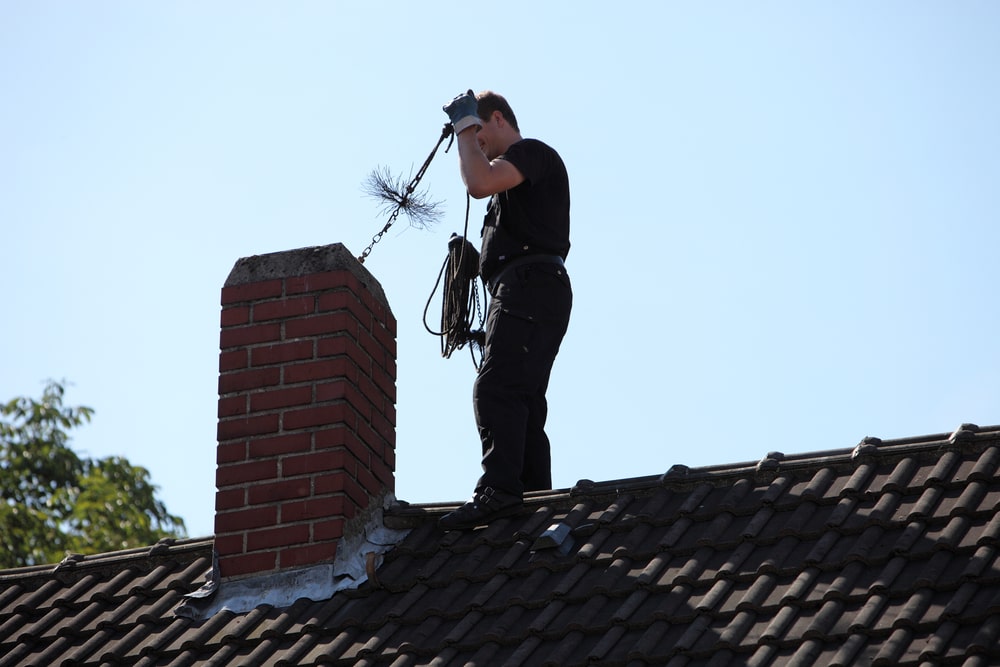How to keep your chimney safe to use
Without a doubt, the question we get asked the most by homeowners is ” how can I keep my chimney safe to use?”
We love this kind of question because it shows that people are proactive about their safety, and they understand the importance of keeping their chimneys in good working order. Keeping your chimney safe to use also means keeping your family and property safe.
The good news is that there are a few relatively simple things you can do to help ensure your chimney continues to function properly, and safely.
The Best Tips to Keep Your Chimney Safe to Use

1. Inspect and clean your chimney regularly
We talk a lot about chimney sweeps and inspections on this blog. However, this is probably the most important thing you can do to keep your chimney safe. Over time, creosote and soot can build up inside the chimney, and if it isn’t removed, they can create a serious fire hazard.
The Chimney Safety Institute of America recommends having your chimney inspected at least once a year by a certified professional. They will be able to spot any potential problems and recommend the best course of action.
If you use your fireplace frequently, you may need to have it cleaned more often. The CSIA recommends having a professional clean your chimney when there is 1/8 inch or more of soot on the walls.
2. Regular maintenance is the key
Just like any other part of your home, your chimney needs regular maintenance to function properly. This means fixing any cracks or damage as soon as possible and making sure the flue is clear of any blockages.
If you are following this guide step by step, you should have your chimney inspected. A professional chimney technician can tell you exactly what needs to be fixed before your next fire.
3. Be Reactive
We talked about inspections and regular maintenance. That would cover the proactive approach to keeping your chimney safe. But what about being reactive? This is vitally important as well.
If you ever smell smoke coming from your fireplace, or if you see flames, it’s time to call the professionals. These are signs that something is wrong and needs to be fixed immediately. Putting off repairs can be extremely dangerous, and it’s not worth the risk.

Other signs that your chimney is not safe to use include:
If you see any of these signs that your chimney needs a repair, call a professional right away. They will be able to assess the damage and make the necessary repairs.
4. Educate yourself and your family
The more you know about something, the better you can take care of it. That’s why we always recommend that homeowners educate themselves on their chimneys.
For instance, you can learn about the different parts of the chimney, how they work, and what needs to be done to keep them clean and safe. Understanding the role of each part will help you determine whether or not your chimney is safe to use.
5. Choose the right fuel
The type of fuel you use in your fireplace can also have an impact on safety. If you’re using wood, make sure it is dry and seasoned. Wet or green wood can create a lot of smoke and creosote build-up.
If you opt for artificial logs, make sure they are designed for use in fireplaces. Some types of artificial logs can release chemicals that are dangerous when inhaled.
Bonus tip: Learn About Fire Safety
You should also educate your family on fire safety, and how to properly use the fireplace. This includes things like building a safe fire, using a screen, and never leaving a fire unattended.
If you have young children, it’s especially important to teach them about fire safety and the dangers of playing near the fireplace.
We hope this guide has been helpful in showing you how to keep your chimney safe to use. Remember, these tips are just a starting point. If you have any questions or concerns, please don’t hesitate to contact a Chimney Specialist in your area.
